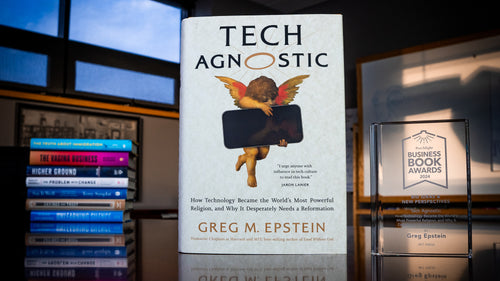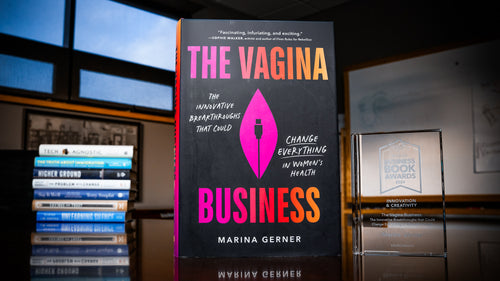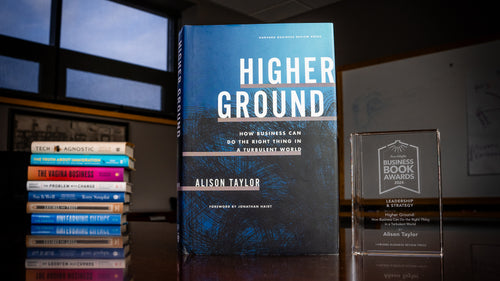Excerpt from Recruit or Die
The following is an excerpt from the book Recruit or Die: How Any Business Can Beat the Big Guys in the War for Young Talent by Chris Resto, Ian Ybarra, and Ramit Sethi. The authors share dozens of recruiting anecdotes that demonstrate the way successful recruiters make it happen, as well as show how not-so-successful recruiters blow it.
Diversity Recruiting
Diversity is one of the most difficult, and sometimes controversial, aspects of college recruiting.
 The following is an excerpt from the book Recruit or Die: How Any Business Can Beat the Big Guys in the War for Young Talent by Chris Resto, Ian Ybarra, and Ramit Sethi. The authors share dozens of recruiting anecdotes that demonstrate the way successful recruiters make it happen, as well as show how not-so-successful recruiters blow it.
Diversity Recruiting
Diversity is one of the most difficult, and sometimes controversial, aspects of college recruiting. Competition is fierce, and the number of quality minority candidates is disproportionately low. Consider the plight of employers in the technology sector. Of all engineering students across the country, only 6.6 percent are African American, 7 percent are Hispanic, and less than 1 percent are Native American. One recruiting manager from a medium-sized software company said, "It makes me pull my hair out."
We are confident that you can improve your diversity recruiting results by using the strategy and tactics throughout this book, but here are some additional guidelines for approaching this unique front in the war for young talent.
Define the diversity you want
There are many reasons you may want to hire and retain a diverse workforce. Perhaps you want your team to reflect the diversity of your changing customer base. Many consumer products makers, for instance, seek to hire people of certain ethnicities specifically for their insights into the expanding Hispanic market in America. Or maybe you just want to ensure that your employees can offer different perspectives to help you better tackle complex problems.
Whether you want to add diversity along dimensions of ethnicity, gender, or physical challenges, the first step to finding talented people in your target groups is to make your intentions and reasons clear to everyone in your organization.
Use the same hiring process as for any other recruit
Many times a CEO's urgent directive for diversity hiring causes an HR department to get so worked up about getting the diversity hires they want that they abandon their normal recruiting processes in the name of "getting the job done." But problems occur when recruiters overzealously handle the process of identifying, screening, and hiring top diversity prospects without involving the business units those recruits will work for, as they would have done with any other recruit. We've seen cases in which HR doesn't tell a business unit they are getting an intern or an entry-level employee until only a few weeks or days before the recruit arrives.
This causes two kinds of problems. First, the business units do not feel invested in the new hires, and may not be properly prepared or equipped to manage and mentor a new hire. Second, the diversity recruits feel awkward when they talk to other recruits and realize that their hiring process was completely different.
Show some class
Because diversity recruiting is so competitive, many employers unfortunately get desperate and display some very tacky behavior. One well-known company was focused on meeting African American students at the MIT career fair. When a group of white students approached the employer's booth, the recruiter said, "Sorry, we aren't interested in you, but here is a gift, and do you have any black friends? We really need them." Of course, the comment made everyone uncomfortable, including college staff at the fair.
Here's another common act of desperation to avoid. A recruiter for a software company called an academic department's internship program saying he needed to fill 20 jobs with talented minority students from the department. When the recruiter asked the department head for "the list," of course the internship director explained, "We just can't do that."
Commit for the long term
Companies are often bewildered when they get few applications after making an on-campus presentation to a student group of their desired diversity segment. Randy Wilson, who is Director of Diversity Programs at the University of Texas M. D. Anderson Cancer Center in Houston, says the students are a bit skeptical of employers who pay special attention to them because they know that the "over-the-top" interest in them can stop as soon as an offer letter is signed: "In the diversity recruiting arena, companies should be focusing on building a great career path, experience, and in retaining employees. Anyone can do the smoke and mirrors during the recruiting process, and most students will easily see through that."
Whether you drop in once or invest in building long-term relationships with certain groups, the students will notice. As Wilson says, "Minority groups have strong social networks," so be assured that word of your recruiting practices will travel fast and it will stick.
Copyright (c) Chris Resto, Ian Ybarra, and Ramit Sethi, 2007. Published by Portfolio.
Recruit or Die: How Any Business Can Beat the Big Guys in the War for Young Talent
The following is an excerpt from the book Recruit or Die: How Any Business Can Beat the Big Guys in the War for Young Talent by Chris Resto, Ian Ybarra, and Ramit Sethi. The authors share dozens of recruiting anecdotes that demonstrate the way successful recruiters make it happen, as well as show how not-so-successful recruiters blow it.
Diversity Recruiting
Diversity is one of the most difficult, and sometimes controversial, aspects of college recruiting. Competition is fierce, and the number of quality minority candidates is disproportionately low. Consider the plight of employers in the technology sector. Of all engineering students across the country, only 6.6 percent are African American, 7 percent are Hispanic, and less than 1 percent are Native American. One recruiting manager from a medium-sized software company said, "It makes me pull my hair out."
We are confident that you can improve your diversity recruiting results by using the strategy and tactics throughout this book, but here are some additional guidelines for approaching this unique front in the war for young talent.
Define the diversity you want
There are many reasons you may want to hire and retain a diverse workforce. Perhaps you want your team to reflect the diversity of your changing customer base. Many consumer products makers, for instance, seek to hire people of certain ethnicities specifically for their insights into the expanding Hispanic market in America. Or maybe you just want to ensure that your employees can offer different perspectives to help you better tackle complex problems.
Whether you want to add diversity along dimensions of ethnicity, gender, or physical challenges, the first step to finding talented people in your target groups is to make your intentions and reasons clear to everyone in your organization.
Use the same hiring process as for any other recruit
Many times a CEO's urgent directive for diversity hiring causes an HR department to get so worked up about getting the diversity hires they want that they abandon their normal recruiting processes in the name of "getting the job done." But problems occur when recruiters overzealously handle the process of identifying, screening, and hiring top diversity prospects without involving the business units those recruits will work for, as they would have done with any other recruit. We've seen cases in which HR doesn't tell a business unit they are getting an intern or an entry-level employee until only a few weeks or days before the recruit arrives.
This causes two kinds of problems. First, the business units do not feel invested in the new hires, and may not be properly prepared or equipped to manage and mentor a new hire. Second, the diversity recruits feel awkward when they talk to other recruits and realize that their hiring process was completely different.
Show some class
Because diversity recruiting is so competitive, many employers unfortunately get desperate and display some very tacky behavior. One well-known company was focused on meeting African American students at the MIT career fair. When a group of white students approached the employer's booth, the recruiter said, "Sorry, we aren't interested in you, but here is a gift, and do you have any black friends? We really need them." Of course, the comment made everyone uncomfortable, including college staff at the fair.
Here's another common act of desperation to avoid. A recruiter for a software company called an academic department's internship program saying he needed to fill 20 jobs with talented minority students from the department. When the recruiter asked the department head for "the list," of course the internship director explained, "We just can't do that."
Commit for the long term
Companies are often bewildered when they get few applications after making an on-campus presentation to a student group of their desired diversity segment. Randy Wilson, who is Director of Diversity Programs at the University of Texas M. D. Anderson Cancer Center in Houston, says the students are a bit skeptical of employers who pay special attention to them because they know that the "over-the-top" interest in them can stop as soon as an offer letter is signed: "In the diversity recruiting arena, companies should be focusing on building a great career path, experience, and in retaining employees. Anyone can do the smoke and mirrors during the recruiting process, and most students will easily see through that."
Whether you drop in once or invest in building long-term relationships with certain groups, the students will notice. As Wilson says, "Minority groups have strong social networks," so be assured that word of your recruiting practices will travel fast and it will stick.
Copyright (c) Chris Resto, Ian Ybarra, and Ramit Sethi, 2007. Published by Portfolio.
Recruit or Die: How Any Business Can Beat the Big Guys in the War for Young Talent



